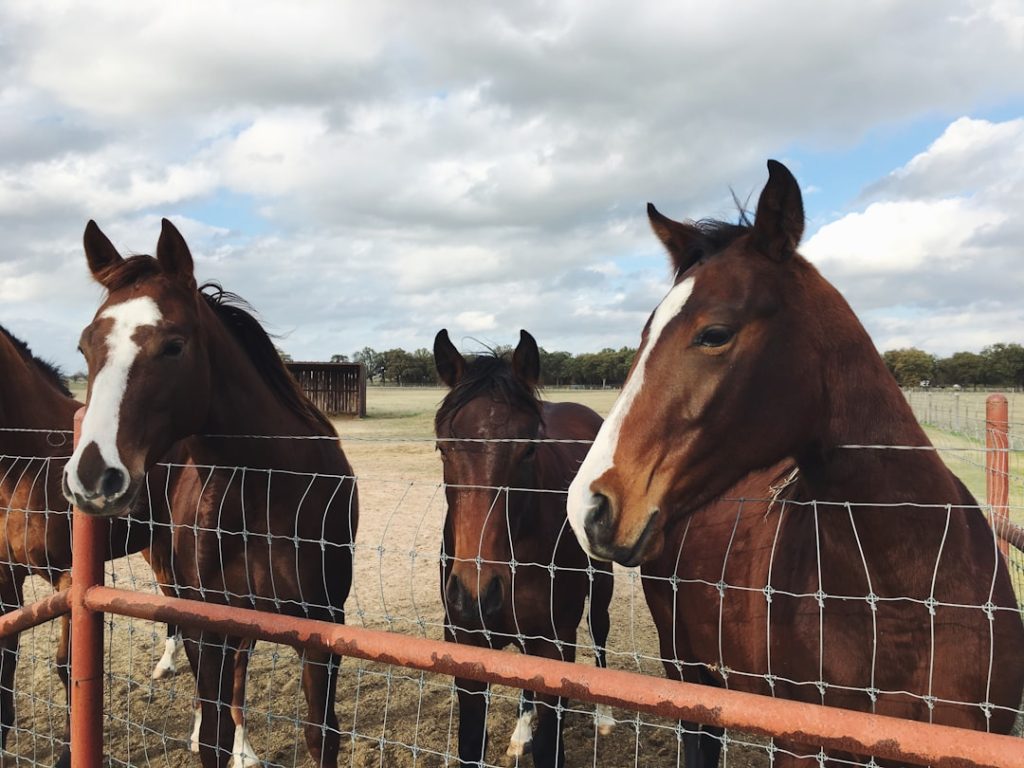Integrating rabbits and chickens in a shared environment is a common practice among small-scale farmers and homesteaders. This combination offers several advantages, including natural pest control, efficient waste management, and potential companionship between the species. While rabbits and chickens can successfully cohabitate, careful planning and management are essential.
This article examines the benefits of keeping rabbits and chickens together, discusses housing requirements, addresses nutritional needs, outlines health and safety considerations, and provides guidance on introducing rabbits to an established chicken flock. By understanding these key aspects, farmers and homesteaders can create a harmonious and productive environment for both rabbits and chickens.
Table of Contents
- 1 Benefits of Keeping Bunnies with Chickens
- 2 Considerations for Housing Bunnies and Chickens Together
- 3 Feeding and Nutrition for Bunnies and Chickens
- 4 Health and Safety Concerns for Bunnies and Chickens
- 5 Introducing Bunnies to an Existing Chicken Flock
- 6 Conclusion and Final Tips for Keeping Bunnies with Chickens
- 7 FAQs
- 7.1 Can bunnies and chickens live together?
- 7.2 What are the benefits of keeping bunnies with chickens?
- 7.3 What should be considered before keeping bunnies with chickens?
- 7.4 How should bunnies and chickens be introduced to each other?
- 7.5 Are there any potential risks of keeping bunnies with chickens?
Key Takeaways
- Keeping bunnies with chickens can be a beneficial and enjoyable experience for both animals and their owners.
- Benefits of keeping bunnies with chickens include pest control, companionship, and efficient use of space.
- When housing bunnies and chickens together, it’s important to provide separate areas for each species to prevent aggression and ensure their safety.
- Feeding and nutrition for bunnies and chickens should be carefully managed to meet the specific dietary needs of each animal.
- Health and safety concerns for bunnies and chickens include predator protection, disease prevention, and regular veterinary care.
Benefits of Keeping Bunnies with Chickens
Pest Control and Management
One of the main advantages of keeping bunnies with chickens is pest control. Bunnies are natural foragers and can help keep the grass and weeds in check, while chickens are excellent at controlling insects and other pests. By allowing bunnies and chickens to roam together in a fenced area, you can create a natural pest management system that reduces the need for chemical pesticides.
Waste Management and Fertilization
Additionally, bunnies and chickens can help manage waste on the farm. Bunnies produce nutrient-rich manure that can be used to fertilize gardens and crops, while chickens produce nitrogen-rich droppings that can also be used as fertilizer. By allowing these animals to coexist, you can create a closed-loop system that reduces the need for external inputs.
Companionship and Productivity
Keeping bunnies with chickens can provide companionship for both species. Bunnies and chickens can form bonds and provide entertainment for each other, creating a more enriching environment for the animals. Another benefit of keeping bunnies with chickens is the potential for increased productivity. Bunnies and chickens have different dietary needs, which means they can complement each other in terms of food consumption. For example, bunnies primarily eat grasses and leafy greens, while chickens require a diet high in protein. By allowing these animals to share the same space, you can maximize the use of available resources and potentially increase the overall productivity of your farm or homestead.
Mutual Benefits and Thriving in Varying Weather Conditions
Lastly, bunnies and chickens can help each other stay warm during colder months. Bunnies are known for their soft fur, which can provide insulation for chickens when they huddle together. In return, chickens can provide warmth for bunnies by sharing body heat. This mutual benefit can help both species thrive in varying weather conditions.
Considerations for Housing Bunnies and Chickens Together

When housing bunnies and chickens together, there are several considerations to keep in mind to ensure the well-being of both species. First and foremost, it’s important to provide separate living spaces for bunnies and chickens within the same enclosure. This can be achieved by using wire mesh or fencing to create distinct areas for each species.
Bunnies require a hutch or shelter that provides protection from the elements and predators, while chickens need a coop with nesting boxes and roosting perches. By providing separate living spaces, you can minimize the risk of aggression or territorial behavior between bunnies and chickens. Another consideration for housing bunnies and chickens together is providing adequate space for both species to roam and exercise.
Bunnies are natural foragers and require ample space to hop around and explore, while chickens need space to scratch and dust bathe. By providing a large fenced area with plenty of vegetation, you can create an environment that meets the needs of both bunnies and chickens. Additionally, it’s important to consider the safety of both species when housing them together.
Predators such as foxes, raccoons, and birds of prey pose a threat to both bunnies and chickens, so it’s essential to implement predator-proofing measures such as burying wire mesh around the perimeter of the enclosure and providing secure locks on hutch and coop doors.
Feeding and Nutrition for Bunnies and Chickens
Feeding and nutrition are important considerations when keeping bunnies with chickens. Bunnies primarily eat grasses, hay, and leafy greens, while chickens require a diet high in protein from sources such as grains, seeds, insects, and kitchen scraps. When feeding bunnies and chickens together, it’s important to provide separate feeding stations to ensure that each species receives the appropriate nutrients.
For bunnies, a constant supply of fresh hay is essential for proper digestion, while chickens require access to a balanced feed that meets their protein needs. In addition to their primary diets, both bunnies and chickens can benefit from supplemental treats such as fruits, vegetables, and herbs. These treats can provide additional nutrients and enrichment for the animals.
However, it’s important to avoid feeding bunnies and chickens foods that are toxic to either species, such as avocado or chocolate for bunnies and onions or garlic for chickens. By carefully managing the feeding and nutrition of both species, you can ensure that they remain healthy and thrive in a shared environment.
Health and Safety Concerns for Bunnies and Chickens
When keeping bunnies with chickens, it’s important to be aware of potential health and safety concerns for both species. One common concern is the risk of disease transmission between bunnies and chickens. While it’s rare for diseases to be transmitted between these two species, it’s still important to practice good hygiene and biosecurity measures to minimize the risk.
This includes regularly cleaning and disinfecting living spaces, providing clean water sources, and monitoring the health of all animals. Another health concern for bunnies and chickens is the risk of injury from aggressive behavior. Chickens may peck at bunnies out of curiosity or territorial behavior, which can lead to injuries.
Similarly, bunnies may kick or scratch at chickens if they feel threatened. To minimize the risk of aggression between bunnies and chickens, it’s important to provide separate living spaces within the same enclosure and monitor their interactions closely.
Introducing Bunnies to an Existing Chicken Flock

Gradual Introduction
It’s essential to gradually introduce the bunnies to the chickens in a controlled environment to minimize stress and potential aggression. One method is to use a wire mesh divider to allow the animals to see and smell each other without direct contact. This can help them become familiar with each other’s presence before being introduced face-to-face.
Supervised Introductions
Once the animals have become accustomed to each other’s presence, you can begin supervised introductions in a neutral territory outside of their living spaces. It’s crucial to closely monitor their interactions during this time and be prepared to intervene if any aggressive behavior occurs.
Creating a Safe Environment
Providing plenty of hiding spots and escape routes for the bunnies can help them feel more secure during the introduction process. It’s also important to consider the individual personalities of both the bunnies and chickens when introducing them to each other. Some animals may be more accepting of new companions than others, so it’s essential to be patient and observant throughout the introduction process.
Conclusion and Final Tips for Keeping Bunnies with Chickens
In conclusion, keeping bunnies with chickens can be a rewarding experience that offers several benefits for both species. By providing separate living spaces, considering their dietary needs, addressing health and safety concerns, and carefully introducing them to each other, you can create a harmonious environment where bunnies and chickens can thrive together. Some final tips for keeping bunnies with chickens include providing plenty of enrichment such as toys, tunnels, and perches for both species to keep them mentally stimulated.
Regularly monitoring their interactions and behavior can help you identify any potential issues early on and address them proactively. Overall, keeping bunnies with chickens requires careful planning and consideration, but with proper management, it can be a successful partnership that enhances the overall well-being of both animals on your farm or homestead.
If you’re considering keeping bunnies with chickens, you may also be interested in learning about whether quails sit on their eggs. Check out this informative article on Poultry Wizard to find out more about quail breeding and egg incubation. Understanding the behavior and needs of different poultry can help you create a harmonious environment for all your animals.
FAQs
Can bunnies and chickens live together?
Yes, bunnies and chickens can live together in the same space as long as they have enough room and are properly introduced to each other.
What are the benefits of keeping bunnies with chickens?
Keeping bunnies with chickens can provide companionship for both animals and can help with pest control in the chicken coop.
What should be considered before keeping bunnies with chickens?
Before keeping bunnies with chickens, it’s important to ensure that both animals have enough space, separate feeding areas, and that the bunny’s hutch is secure from predators.
How should bunnies and chickens be introduced to each other?
Bunnies and chickens should be introduced to each other gradually, with supervision, to ensure that they get along and do not harm each other.
Are there any potential risks of keeping bunnies with chickens?
Potential risks of keeping bunnies with chickens include the possibility of the bunny being injured by the chickens or the chickens pecking at the bunny. It’s important to monitor their interactions closely.
Meet Walter, the feathered-friend fanatic of Florida! Nestled in the sunshine state, Walter struts through life with his feathered companions, clucking his way to happiness. With a coop that’s fancier than a five-star hotel, he’s the Don Juan of the chicken world. When he’s not teaching his hens to do the cha-cha, you’ll find him in a heated debate with his prized rooster, Sir Clucks-a-Lot. Walter’s poultry passion is no yolk; he’s the sunny-side-up guy you never knew you needed in your flock of friends!







